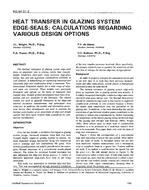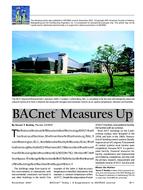Click here to purchase
In the 60’s and 70’s face-sealed systems were commonly used in the building envelope to prevent rainwater from penetrating the façade. However, numerous problems with water ingress were reported. As several research studies showed that the presence of a drainage space significantly improved the water management of cladding wall assemblies, wall assemblies have then evolved towards multi-layered systems. The present study provides an overview of past research on the drainage capacity of wall assemblies with small drainage cavities to gain a better understanding of the parameters that affect drainage efficiency and retention in wall assemblies. Furthermore, a numerical runoff model was analyzed and compared to preliminary test results. Past research already gave a good overview of measured drainage rates and drainage efficiencies. However, as all these studies adopt different test methods and no detailed information is given on the wetted area, results from different studies cannot be compared. It was found that the drainage cavity width, the drainage media, spreading of water in the wall and the surface roughness and dynamic contact angles had a significant impact on the drainage capacity of wall assemblies. Future research will look more into detail into the impact of these parameters and compare test results with results obtained from simulations with the numerical runoff model.
Citation: Thermal Buildings XIV 2019
Product Details
- Published:
- 2019
- Number of Pages:
- 8
- Units of Measure:
- Dual
- File Size:
- 1 file , 1.6 MB
- Product Code(s):
- D-Bldgs19-093


